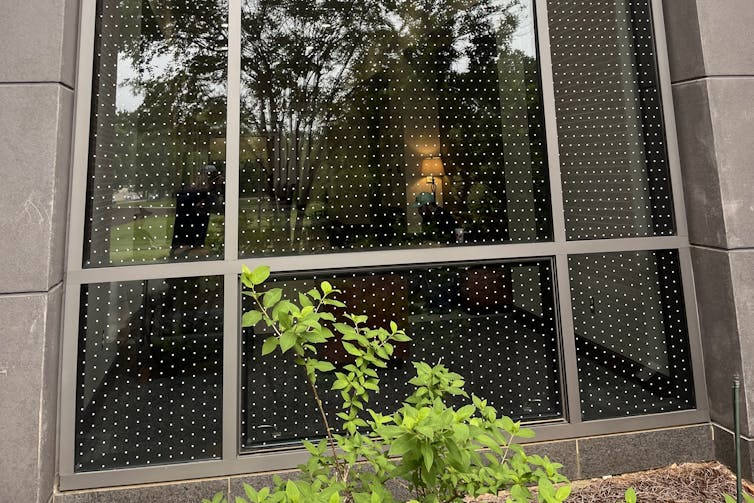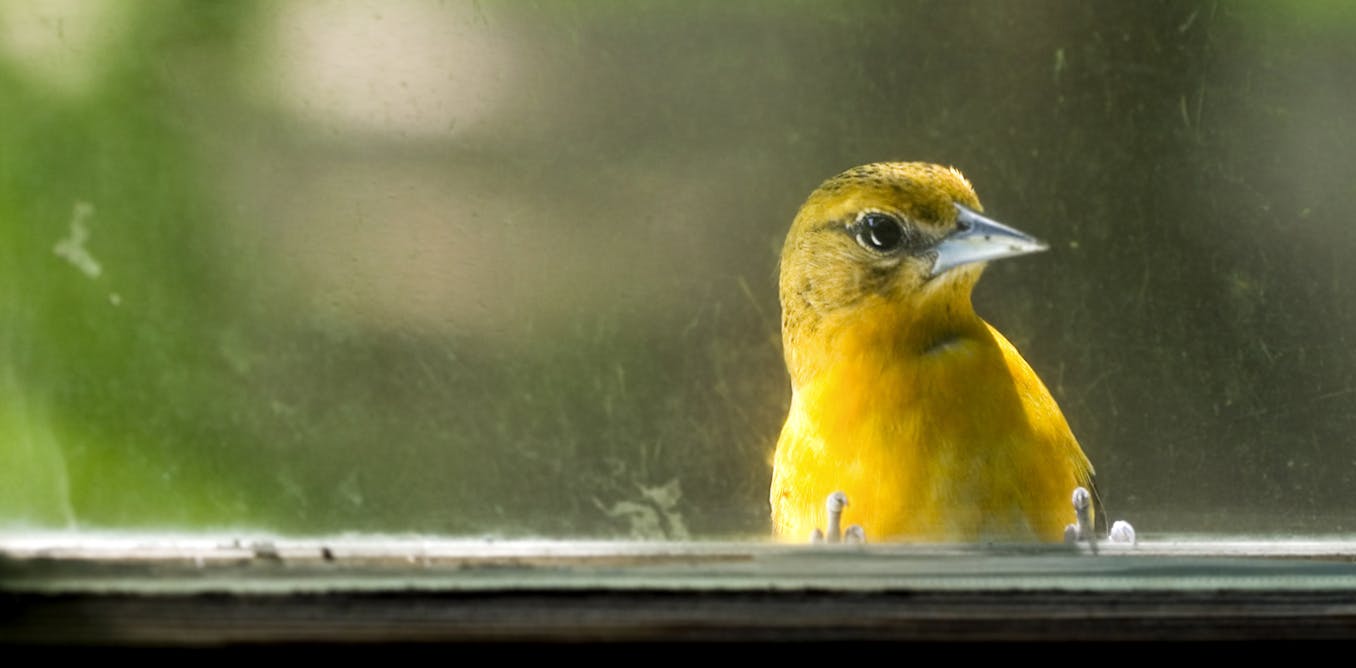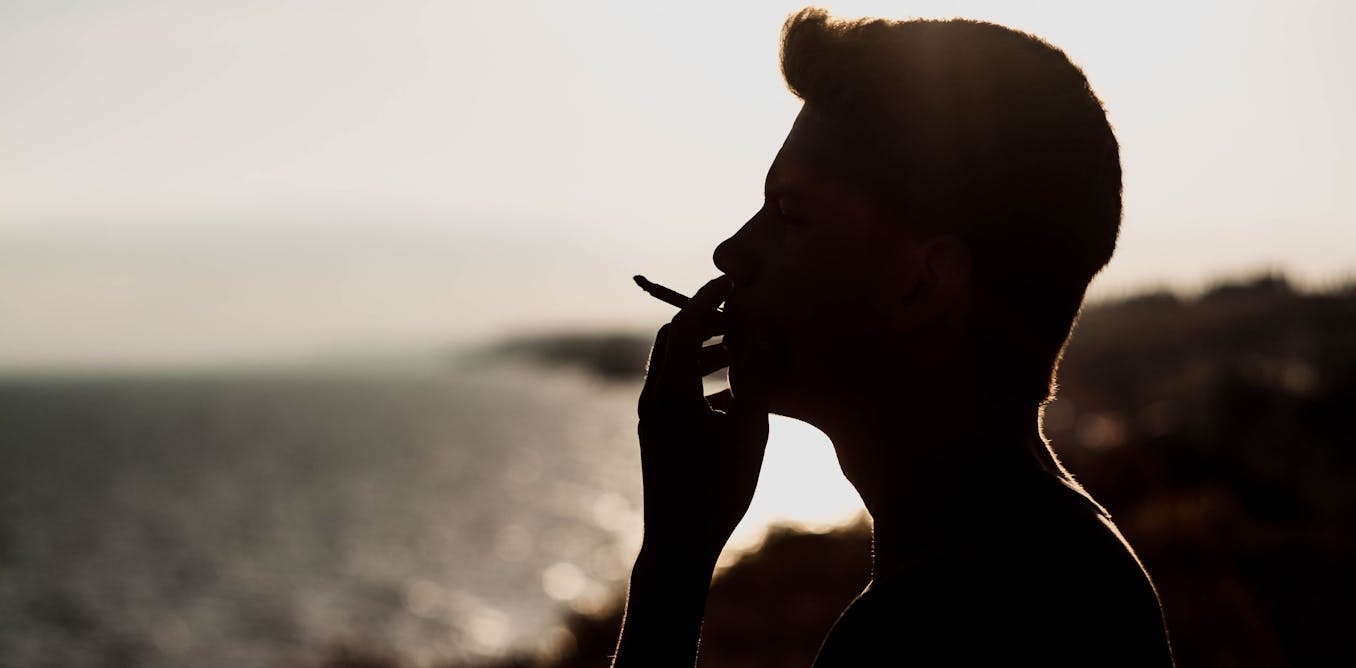When wood thrushes arrive in northern Mississippi on their spring migration and begin to serenade my neighborhood with their ethereal, harmonized song, it’s one of the great joys of the season. It’s also a minor miracle. These small creatures have just flown more than 1,850 miles (3,000 kilometers), all the way from Central America.
Other birds undertake even longer journeys — the Swainson’s thrush, for example, nests as far north as the boreal forests of Alaska and spends the nonbreeding season in northern South America, traveling up to 5,600 miles (9,000 kilometers) each way.
These stunning feats of travel are awe-inspiring, making it that much more tragic when they are cut short by a deadly collision with a glass window.
This happens with alarming regularity. Two recent scientific studies estimate that more than 1 billion birds – and as many as 5.19 billion – die from collisions with sheet glass each year in the United States alone, sometimes immediately but often from their injuries.
In fact, window collisions are now considered the top human cause of bird deaths. Due to window collisions and other causes, bird populations across North America have declined more than 29% from their 1970 levels, likely with major consequences for the world’s ecosystems.
These collisions occur on every type of building, from homes to skyscrapers. At the University of Mississippi campus, where I teach and conduct research as an ecologist, my colleagues and I have been testing some creative solutions.
Why glass is so often deadly for birds
Most frequently, glass acts as a mirror, reflecting clear sky or habitat. There is no reason for a bird to slow down when there appears to be a welcoming tree or shrub ahead.
These head-on collisions frequently result in brain injuries, to which birds often succumb immediately.
In other cases, birds are stunned by the collision and eventually fly off, but many of those individuals also eventually perish from brain swelling.
Other injuries, to wings or legs, for example, can leave birds unable to fly and vulnerable to cats or other predators. If you find an injured bird, contact a local wildlife rehabilitator.
Which windows are riskiest
Some windows are much worse than others, depending on their proximity to bushes and other bird habitats, what is reflected in them, and how interior lighting exacerbates or diminishes the mirror effect.
On our campus, some buildings with a great deal of glass surface area kill surprisingly few birds, while other small sets of windows are disproportionately deadly.
Jason Hoeksema/University of Mississippi
One particular elevated walkway with glass on both sides between the chemistry and pharmacy buildings is a notoriously dangerous spot. The glass kills migratory birds each spring and fall as they try to pass between the two buildings on their way to The Grove, the university’s central-campus park area with large old oak trees.
During the pandemic in 2020, student Emma Counce did the heart-heavy work of performing a survey of 11 campus buildings almost daily during spring migration. She found 72 bird fatalities in seven weeks. Five years later, my ornithology students completed a new survey and found 62 mortalities over the course of five weeks in 2025, demonstrating that we still have a lot of work to do to make our campus safe for migratory birds.
Thrushes, perhaps due to their propensity for whizzing through tight spaces in the shady forest understory, have been disproportionately represented among the victims. Others include colorful songbirds – northern parulas, black-and-white warblers, prothonotary warblers, Kentucky warblers, buntings, vireos and tanagers.
How to make windows less dangerous
The good thing is that everyone can do something to lower the risk.
Films, stickers or strings can be added on the exterior of windows, creating dots or lines, 2 to 4 inches apart, that break up reflections to give the appearance of a barrier.
Exterior screens and blinds work great too. Just adding a few predator silhouette stickers is not effective, by the way – the treatment needs to span the whole window.

Jason Hoeksema/University of Mississippi
When applied properly, window treatments can make a huge difference. An inspiring example is McCormick Place in Chicago, the country’s largest convention center, which notoriously killed nearly 1,000 birds in a single night in 2023. After workers applied dot film to an area of the building’s windows equivalent to two football fields, bird mortality at the lakeside building has been reduced by 95%.
The Bird Collision Prevention Alliance provides information on options for retrofitting home or office windows to make them more bird friendly.
Options for new windows are also becoming more common. For example, the new Center for Science & Technology Innovation on my campus, which features many windows, mostly used bird-friendly glass with subtle polka dots built into it. This spring, we found that it killed only four birds, despite a very high surface area of glass.
How you can help
When trying to make a difference on your home turf, I suggest starting small. Make note of which specific windows have killed birds in the past, and treat them first.
Use it as an opportunity to learn what approach might work best for you and your building. Either order a product or make something yourself and get it installed.
Then do another, and tell a friend. At the office, talk to people, find others who care and build a team to make gradual change.
With some creative solutions, anyone can help reduce at least this major risk.

The post “Windows are the No. 1 human threat to birds – an ecologist shares some simple steps to reduce collisions” by Jason Hoeksema, Professor of Ecology, University of Mississippi was published on 05/21/2025 by theconversation.com




































Leave a Reply